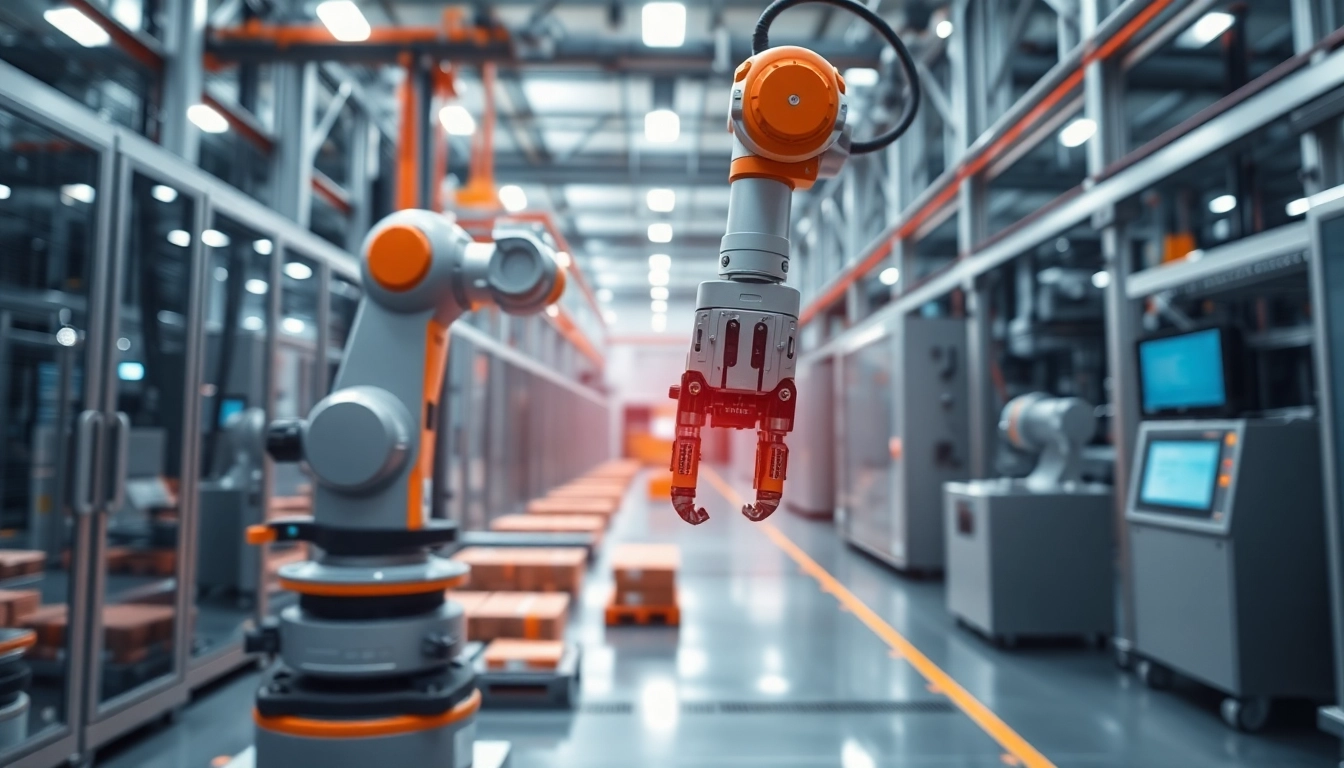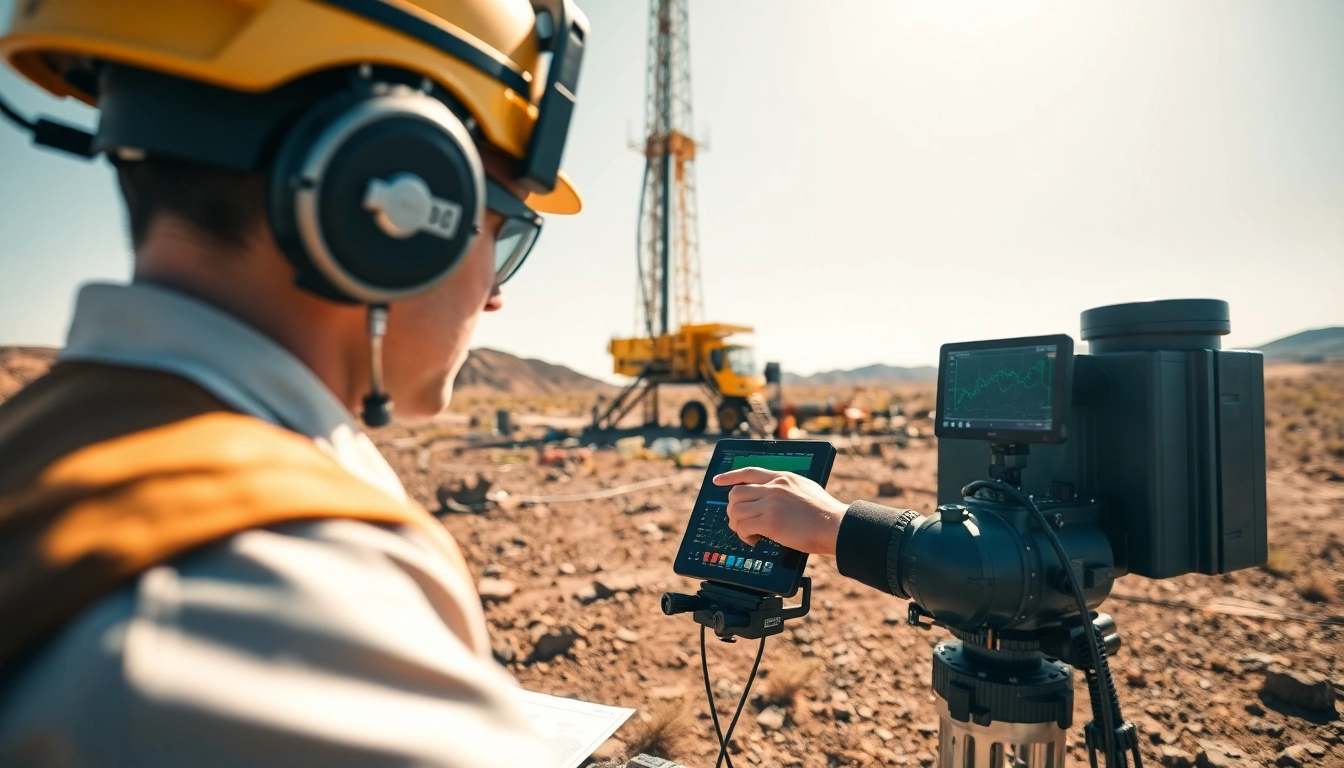Introduction to Machine Vision
Machine vision is an innovative technology that enables systems to derive meaningful information from visual images. By utilizing sophisticated algorithms, extensive data processing, and complex hardware, machine vision systems can replicate human visual understanding and provide insights that enhance decision-making processes. As industries increasingly depend on automation, understanding the fundamentals of this technology, its historical trajectory, applications, and future potential becomes crucial for businesses aiming to remain competitive.
Defining Machine Vision
Machine vision refers to the use of computer algorithms to perform image processing and interpretation automatically, ensuring that systems can “see” and analyze images similarly to human eyesight. This typically incorporates the use of cameras, sensors, and applied artificial intelligence (AI) technology to allow machines to detect, identify, and respond to visual stimuli.
History and Evolution of Technology
The roots of machine vision can be traced back to the early days of automation. The integration of cameras and image processing systems began in the 1960s, primarily for industrial inspection purposes. The evolution of this technology has continually progressed, paralleling advancements in AI, computational power, and sensor technologies. Key milestones include:
- 1960s: Introduction of the first machine vision systems in factories for quality inspection.
- 1980s: Development of more sophisticated image processing algorithms and components.
- 1990s: Growing acceptance and usage of machine vision for various industrial automation tasks.
- 2010s: Advances in deep learning and AI leading to more intelligent and adaptable machine vision systems.
Applications Across Industries
Machine vision finds applications across various sectors, including:
- Manufacturing: Quality assurance processes, assembly verification, and defect detection.
- Aerospace: Precision inspection of components and safety checks.
- Automotive: Automation of assembly lines, including part identification and quality control.
- Healthcare: Imaging systems for diagnostic purposes and compound analysis.
- Logistics: Barcode scanning, package sorting, and inventory management.
How Machine Vision Works
Core Components of Machine Vision Systems
A reliable machine vision system incorporates several critical components:
- Cameras: Capture images or video that initiate the inspection process, available in various types (2D, 3D, multispectral).
- Lighting: Proper lighting is essential for enhancing image quality and ensuring accurate data interpretation.
- Processors: Utilize powerful CPUs and GPUs to analyze captured images quickly and effectively.
- Software: Algorithms that facilitate image processing, object recognition, and data analysis.
Image Processing Techniques
Image processing in machine vision involves several methodologies aimed at extracting useful information from the acquired images:
- Thresholding: Differentiating objects from backgrounds by setting color intensity limits.
- Edge Detection: Identifying object boundaries to facilitate contour recognition.
- Pattern Recognition: Comparing captured images against stored templates to identify specific features.
- Machine Learning: Utilizing trained models to improve detection and classification capabilities over time.
Data Analysis and Decision Making
The extracted data from image processing undergoes further analysis to influence decision-making. Several analytical techniques are employed:
- Statistical Analysis: Utilizing metrics to evaluate product quality and production efficiency.
- Predictive Analytics: Assessing potential future trends based on current data inputs.
- Real-Time Monitoring: Immediate feedback loop for operators to correct issues or optimize processes.
Benefits of Implementing Machine Vision
Quality Control and Inspection
Machine vision systems drastically improve product quality control processes by offering high precision and consistency. Capable of detecting minute defects, these systems enhance reliability, which ultimately leads to reduced returns and higher customer satisfaction.
Increased Efficiency and Productivity
Automation through machine vision elevates operational efficiency. By replacing manual inspection with automated systems, companies can speed up production lines, reduce labor costs, and allocate resources more effectively. This translates to shorter turnaround times and enhanced throughput rates.
Cost Reduction Strategies
Implementing machine vision can yield significant cost savings by minimizing scrap and rework associated with defective products. Additionally, the increased efficiency gained through automation can lead to better resource utilization, reduced labor costs, and lower overheads.
Common Challenges in Machine Vision
Technical Limitations and Solutions
Despite the many advantages of machine vision, businesses may face several technical limitations:
- Variability in Image Quality: Factors such as lighting and camera resolution can affect outcome accuracy. Therefore, selecting appropriate lighting and camera configurations is critical.
- Complexity of Algorithms: It may be challenging to implement highly specialized algorithms that require robust training data. Companies should invest in adequate training to enhance algorithm accuracy.
- Integration Issues: Difficulties in integrating new vision systems into existing workflows can be challenging. Establishing effective planning and communication is essential for smooth transitions.
Integration with Existing Systems
Successful integration with legacy systems is key to a smooth transition to machine vision technologies. Businesses must evaluate existing equipment and infrastructure, ensuring that all new components communicate effectively with their precursors. A well-defined integration strategy should alleviate disruptions during deployment.
Addressing Operational Challenges
As with any technology implementation, operational challenges may arise in deployment and ongoing management:
- Training and Skills Development: Ongoing training is necessary to ensure personnel handle machine vision systems effectively.
- Maintaining Equipment: Regular maintenance is vital to enhance longevity and consistent performance.
- Addressing Resistance to Change: Managing stakeholder concerns and opinions is crucial for successful adoption and must be accounted for in implementation plans.
The Future of Machine Vision Technologies
Trends in Automation and AI
Machine vision stands to benefit greatly from ongoing advancements in automation and artificial intelligence. Emerging technologies such as deep learning, IoT integration, and edge computing are developing sophisticated systems capable of real-time image analysis and decision-making, enhancing overall performance and adaptability.
Emerging Applications and Innovations
Innovations in machine vision are paving the way for exciting new applications. Industries are exploring innovative uses in fields such as:
- Autonomous Vehicles: Advanced machine vision systems allow vehicles to identify obstacles and navigate environments.
- Augmented Reality: Enhancing interactive experiences through real-time image processing in consumer applications.
- Smart Manufacturing: IoT-connected machines that coordinate seamlessly, optimizing production processes in real-time.
Preparing for Future Developments
As machine vision technology continues to advance, organizations must remain prepared for future innovations. Investing in R&D, fostering partnerships within tech ecosystems, and advocating for employee skills growth will ensure that businesses can leverage the full potential of emerging machine vision technologies.




